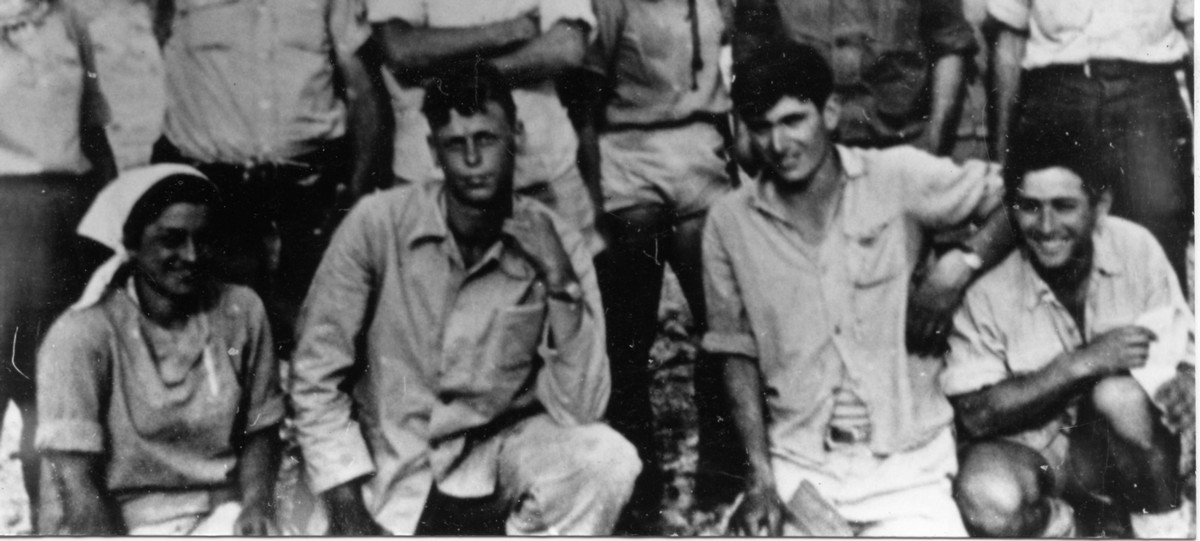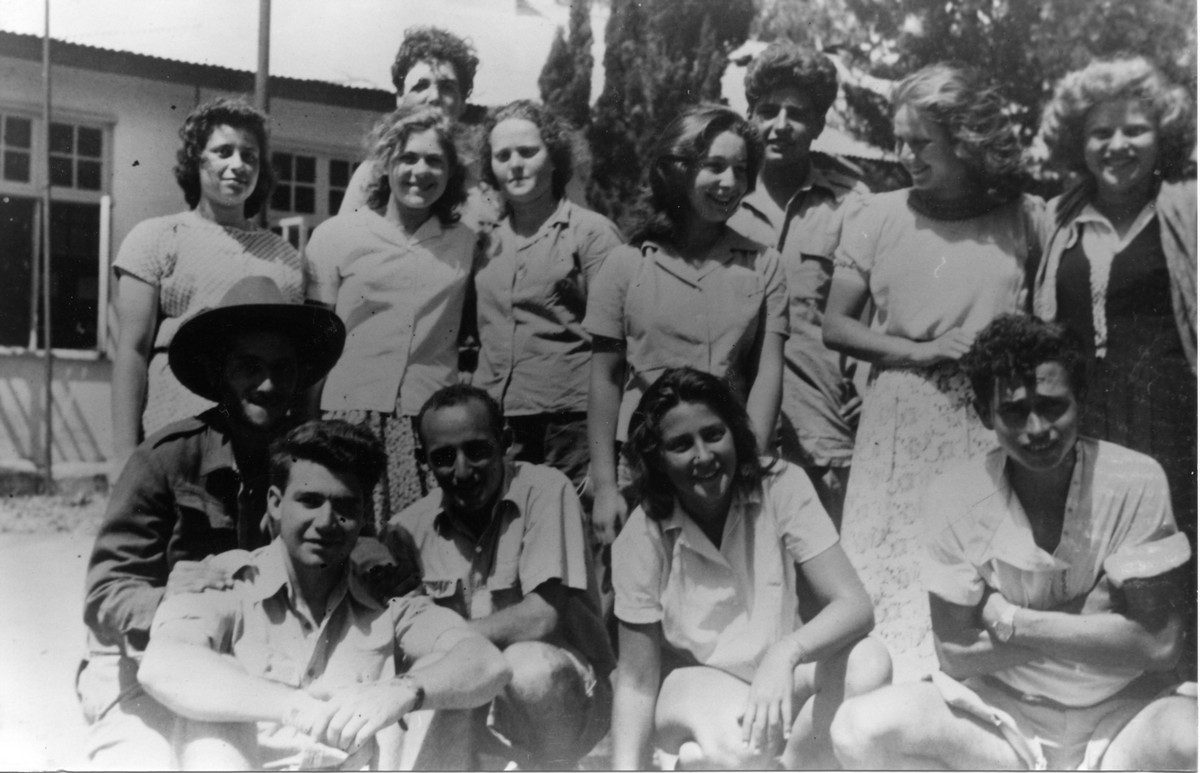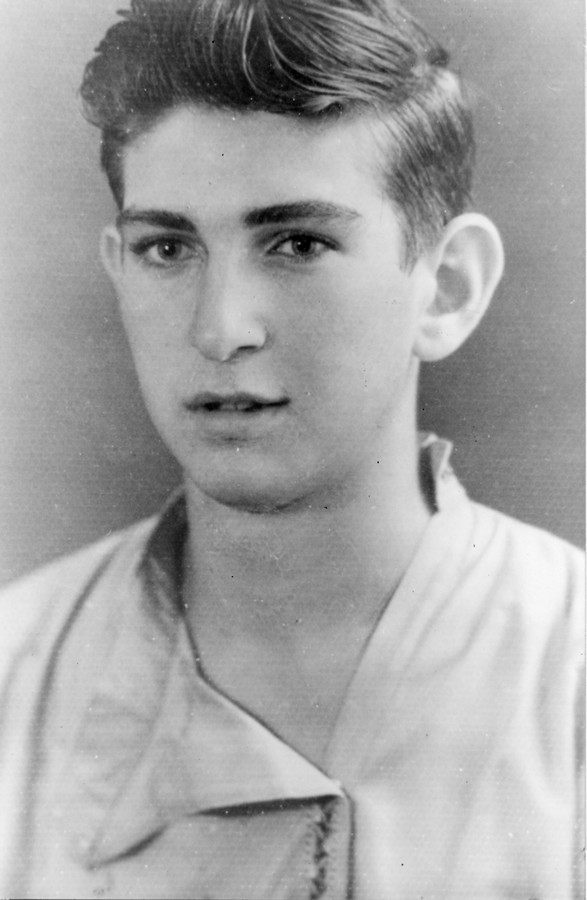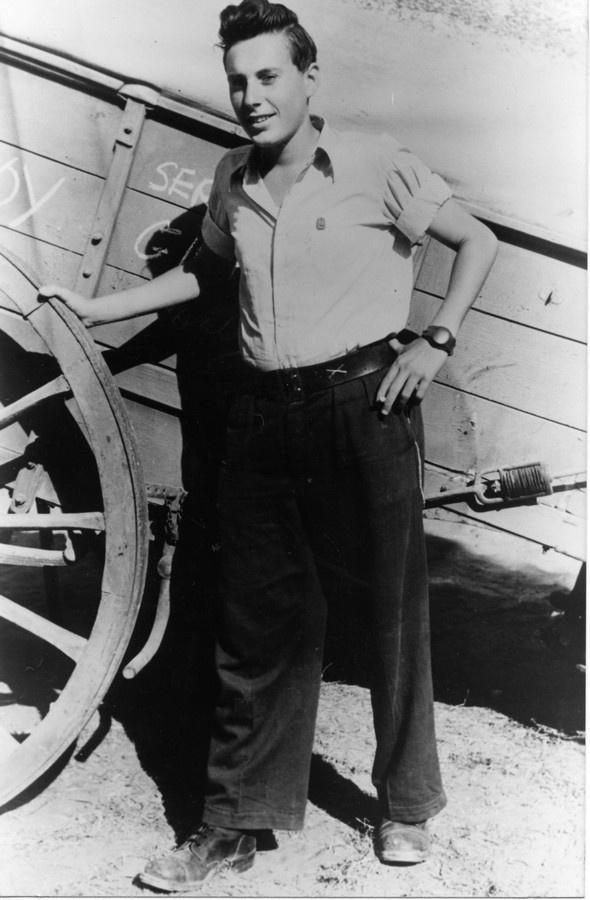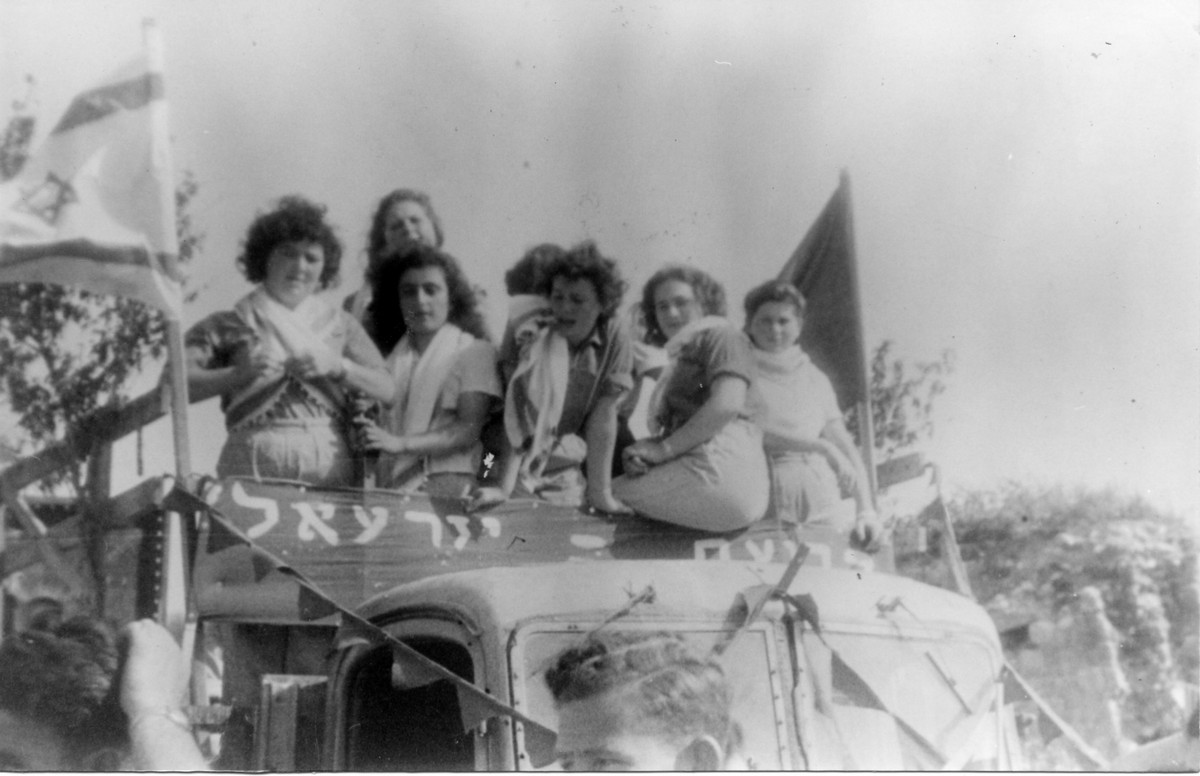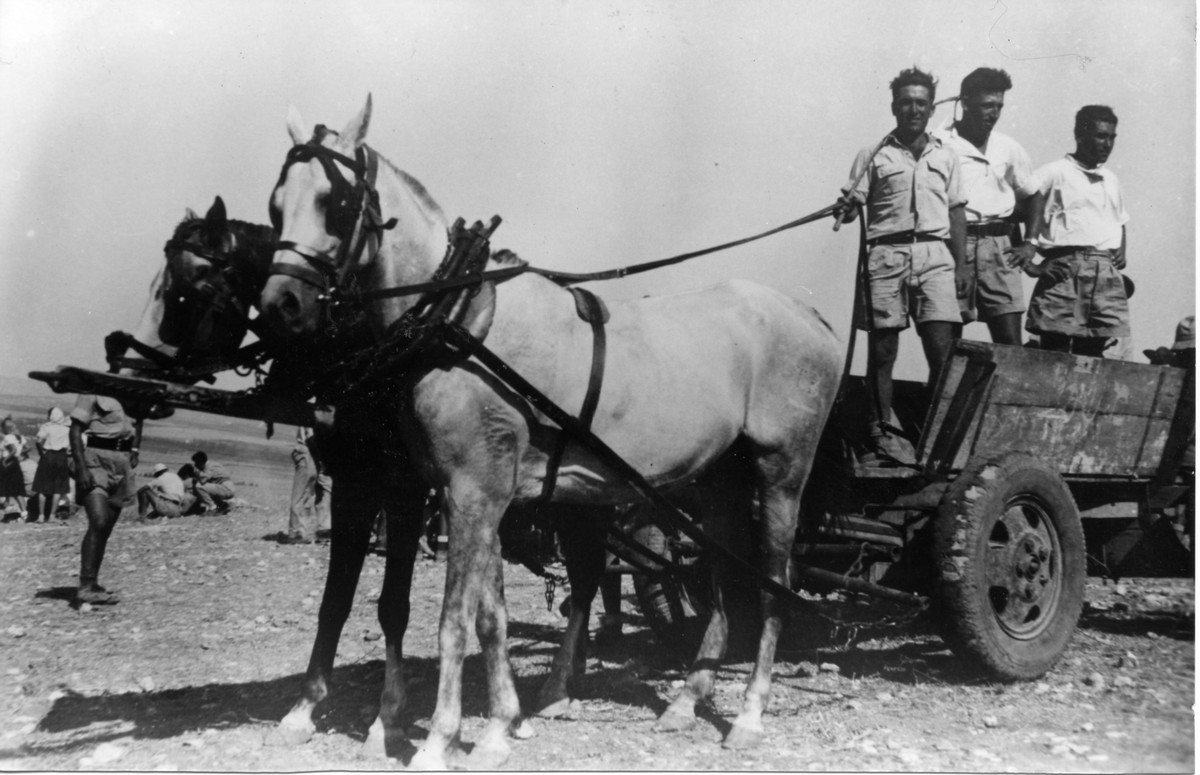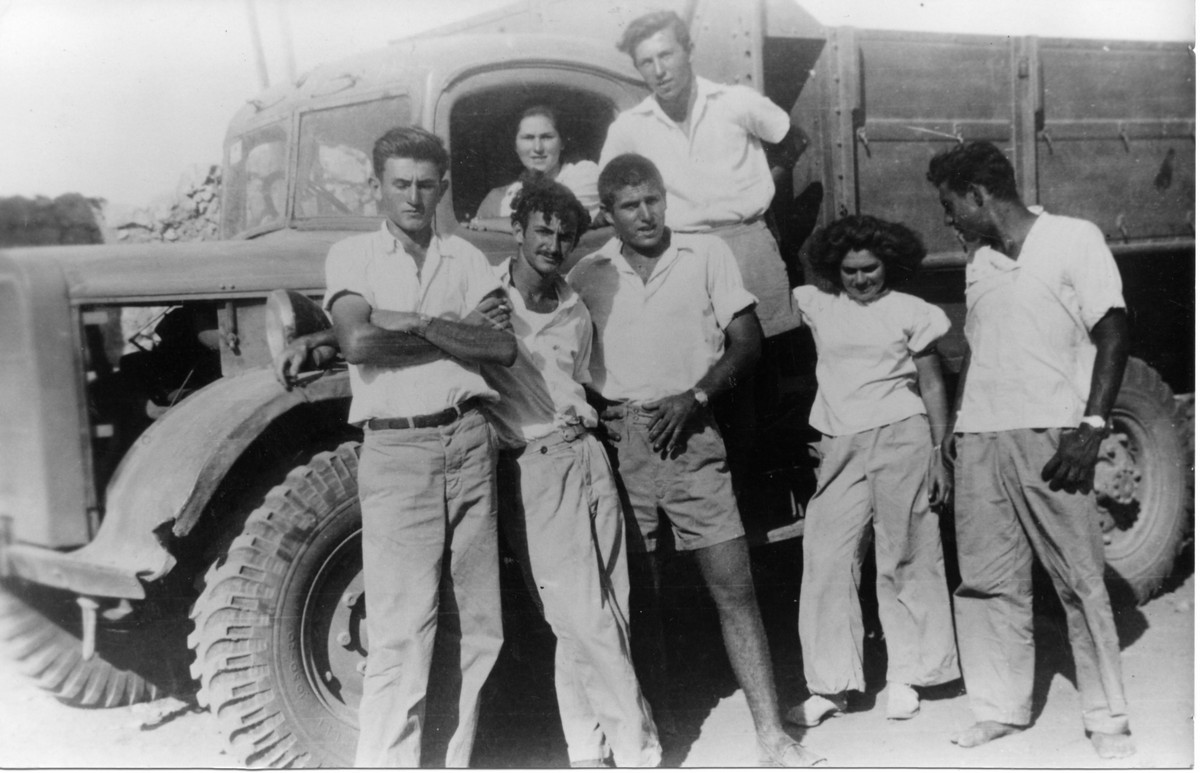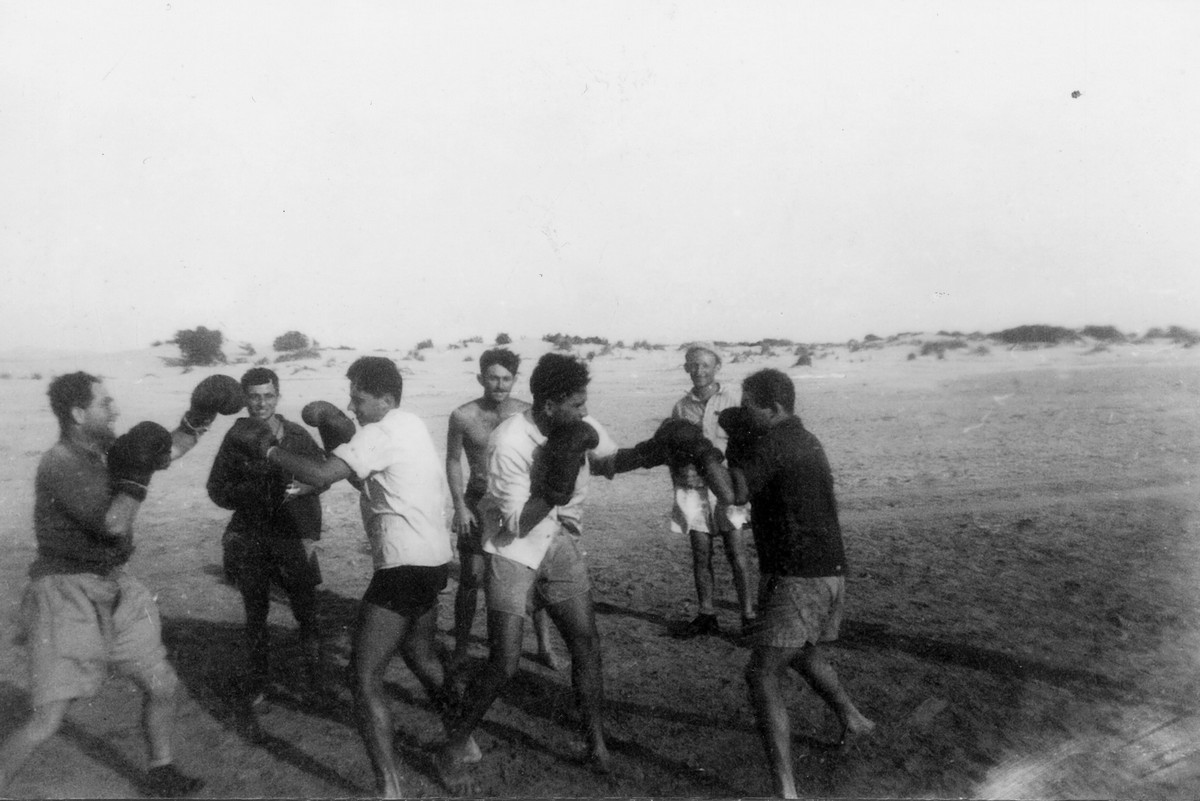The Attack on the Arms Convoy at Qiryat Motzkin
On the morning of 17.3.1948, the Intelligence Service of the Haganah (SHAI) received a tip-off that an Arab arms convoy had left Beirut for Haifa commanded by al-Hunaiti, a captain in the Arab Legion and Commander of the Arab Forces in Haifa. Shai also knew the composition of the convoy, its timetable and the course of its progress. The destruction of the convoy was a severe blow to the Arab central command in Haifa and to the morale of the Arab fighters and population. Many residents fled and a depressed atmosphere prevailed amongst those who remained. The circumstances greatly assisted in the capture of the city.
Early in March 1948 Shai learned that the commander of the Arab Forces in Haifa had left for Syria and Lebanon in order to obtain weapons and money for salaries. Shai also knew the composition of the convoy, its timetable and the course of its progress. It consisted of two trucks loaded with two tons of explosives, 550 French rifles, two mine detectors and about 120,000 bullets for rifles and submachine-guns, and about 1,000 hand grenades. The convoy was escorted by one car carrying security forces and another carrying the Jordanian commander and his bodyguard. At Sidon the convoy was joined by a truck loaded with arms for the forces of the Jihad-al-Mukads (the Mufti’s military organization). Had this convoy reached Haifa it could have given the city’s Arabs a significant advantage.
When the intelligence was received, the 21st Battalion started organizing to attack the convoy. The first attempt to block it, at Ein Sarah, close to Nahariya, failed because the ambush did not identify the convoy and damaged other cars. When the convoy’s members stopped to eat at Acre, a force of ten persons from the 1st Battalion, staying at Ramat Yohanan was summoned, headed by platoon commander Pinhas (“Siko’) Zussman and squad commander Noam Pasmanick. Pasmanick understood that fast action was required. Without orderly organization and without waiting for higher authorization, his squad took up an ambush position alongside the main road נחל נעמן, north of Qiryat Motzqin. A military policeman on a motorbike was positioned alongside the Naaman porcelain factory as a lookout. At 15.30 he spotted the convoy and raced beyond the barrier in order to announce its arrival. Those manning the barricade quickly erected a barrier of barrels on the road.
When the convoy approached it opened fire on the barrier and a battle began. The leading car broke through in the direction of Haifa, whilst another car overturned and escaped to Acre. The other trucks remained on the road.
Those manning the barricade stormed the Arabs, simultaneously throwing grenades, with the object of trapping the trucks and their precious cargo. One soldier, Avraham Avigdori dashed onto the road and destroyed the enemy's two Bren guns with his submachine gun. The soldier Emanuel Landau and squad commander Pasmanick jumped on the trucks and tried to take control of them. Landau started one of the trucks, but bullets fired at it detonated the explosives, blowing up nearby cars too. The explosion killed Landau and Pasmanick and Avigdori was severely injured. At least 20 Arabs were killed (their own sources claimed 30-40 casualties).
The destruction of the convoy was a severe blow to the Arab central command in Haifa and to the morale of the Arab fighters and population. Many residents fled and a depressed atmosphere prevailed amongst those who remained. The circumstances greatly assisted in the capture of the city.
Emanuel Landau and Avraham Avigdori received 'medals of courage' for their outstanding performance in battle.
When the intelligence was received, the 21st Battalion started organizing to attack the convoy. The first attempt to block it, at Ein Sarah, close to Nahariya, failed because the ambush did not identify the convoy and damaged other cars. When the convoy’s members stopped to eat at Acre, a force of ten persons from the 1st Battalion, staying at Ramat Yohanan was summoned, headed by platoon commander Pinhas (“Siko’) Zussman and squad commander Noam Pasmanick. Pasmanick understood that fast action was required. Without orderly organization and without waiting for higher authorization, his squad took up an ambush position alongside the main road נחל נעמן, north of Qiryat Motzqin. A military policeman on a motorbike was positioned alongside the Naaman porcelain factory as a lookout. At 15.30 he spotted the convoy and raced beyond the barrier in order to announce its arrival. Those manning the barricade quickly erected a barrier of barrels on the road.
When the convoy approached it opened fire on the barrier and a battle began. The leading car broke through in the direction of Haifa, whilst another car overturned and escaped to Acre. The other trucks remained on the road.
Those manning the barricade stormed the Arabs, simultaneously throwing grenades, with the object of trapping the trucks and their precious cargo. One soldier, Avraham Avigdori dashed onto the road and destroyed the enemy's two Bren guns with his submachine gun. The soldier Emanuel Landau and squad commander Pasmanick jumped on the trucks and tried to take control of them. Landau started one of the trucks, but bullets fired at it detonated the explosives, blowing up nearby cars too. The explosion killed Landau and Pasmanick and Avigdori was severely injured. At least 20 Arabs were killed (their own sources claimed 30-40 casualties).
The destruction of the convoy was a severe blow to the Arab central command in Haifa and to the morale of the Arab fighters and population. Many residents fled and a depressed atmosphere prevailed amongst those who remained. The circumstances greatly assisted in the capture of the city.
Emanuel Landau and Avraham Avigdori received 'medals of courage' for their outstanding performance in battle.































